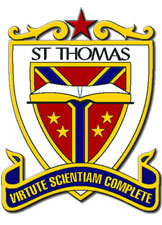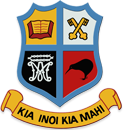History

New Zealand's state education system was established in 1877. Prior to then, schools were run by church groups and other private groups. From 1852 until provinces were abolished in 1876, all schools were entitled to receive some financial assistance from provincial governments. Under the Education Act 1877, education became compulsory for all children between 7 and 13 years of age and gave all children between 5 and 15 years of age the entitlement to free and secular education in a state-run school. The secular-education requirement arose from a deadlock between secularist, Catholic, and Protestant MPs over how much and what type of religious influence (if any) should be included in state schools. Ultimately, MPs opted for the safest route by making state education secular. As a result, both Catholic and Protestant churches continued to organise and expand their own private school systems. [1] [4] [5]
After the Second World War, private religious schools had to cope with increasing rolls due to changes in the compulsory school starting and leaving ages (the school leaving age was increased to 15 in 1944; the school starting age was lowered to 6 in 1964) and the post-war baby boom. In addition, private schools had to keep pace with the drive for higher-quality facilities and smaller class sizes in the state sector, while dealing with a teacher shortage and the increasing cost of land, equipment and salaries. The Catholic school system, in particular, had to hire more lay teachers to cope with student numbers – the proportion of lay teachers in the Catholic system increased from 5 percent in 1956 to 38 percent in 1972 – and more lay teachers meant higher salary costs. Catholic parishes were struggling to meet the increasing costs while keeping tuition fees down, and ultimately many of them accrued large amounts of debt or cut costs, causing schools to be run down. By the end of the 1960s, the Catholic school system was facing a financial crisis and was on the brink of collapse. [4]
In November 1972, the Labour Party was elected to government, and Prime Minister Norman Kirk immediately sought a solution to the Catholic school funding crisis. The government determined the state school system would not be able to cope with an influx of students if the Catholic system were to collapse, so sought a way for the state to assist them to keep them open. The idea of integrating private schools into the state system has been credited to MP (and later Speaker of the House) Jonathan Hunt, and after consultation, the Private Schools Conditional Integration Act was drawn up. [4] The Act was passed by Parliament and signed into law on 10 October 1975, and came into force on 16 August 1976. [4] [6]
The first private school to integrate was Wesley College, Pukekohe, in 1977. The first two Catholic schools to integrate were Cardinal McKeefry School and St Bernard's School, both in Wellington, in August 1979. Despite the increasing urgency, it took until 1984 to integrate every Catholic school. [4]



